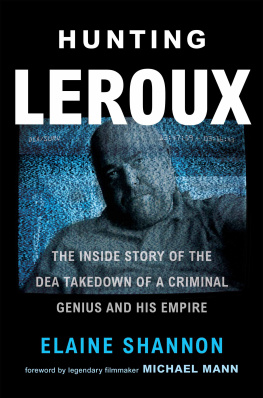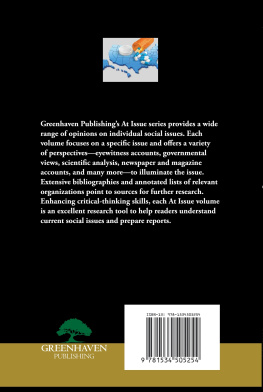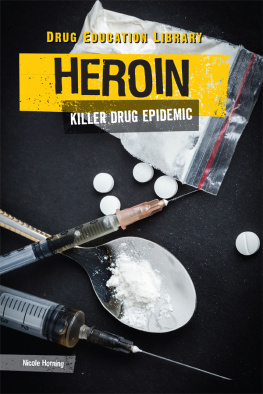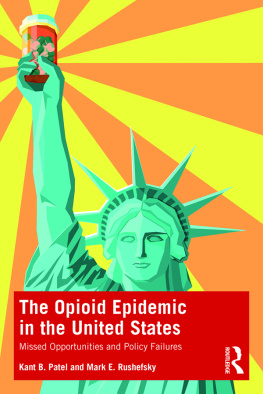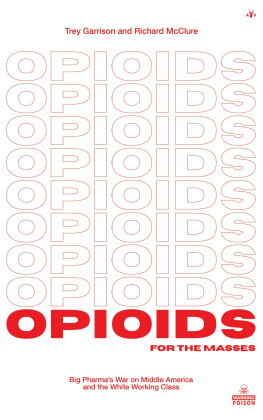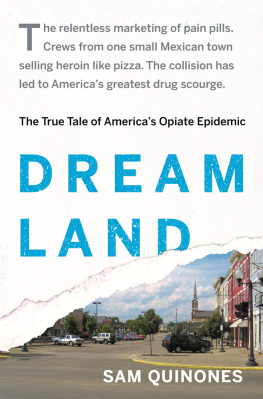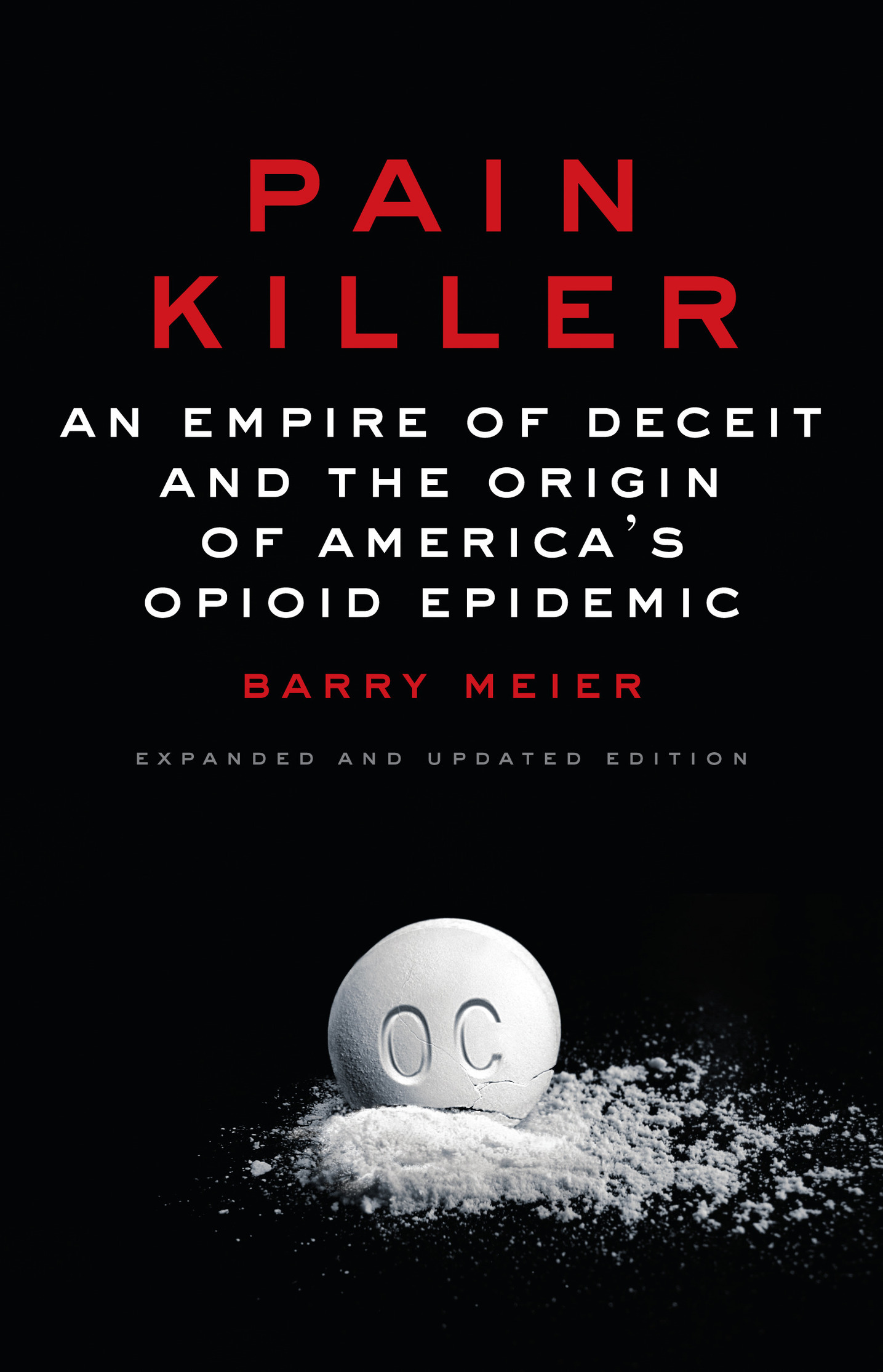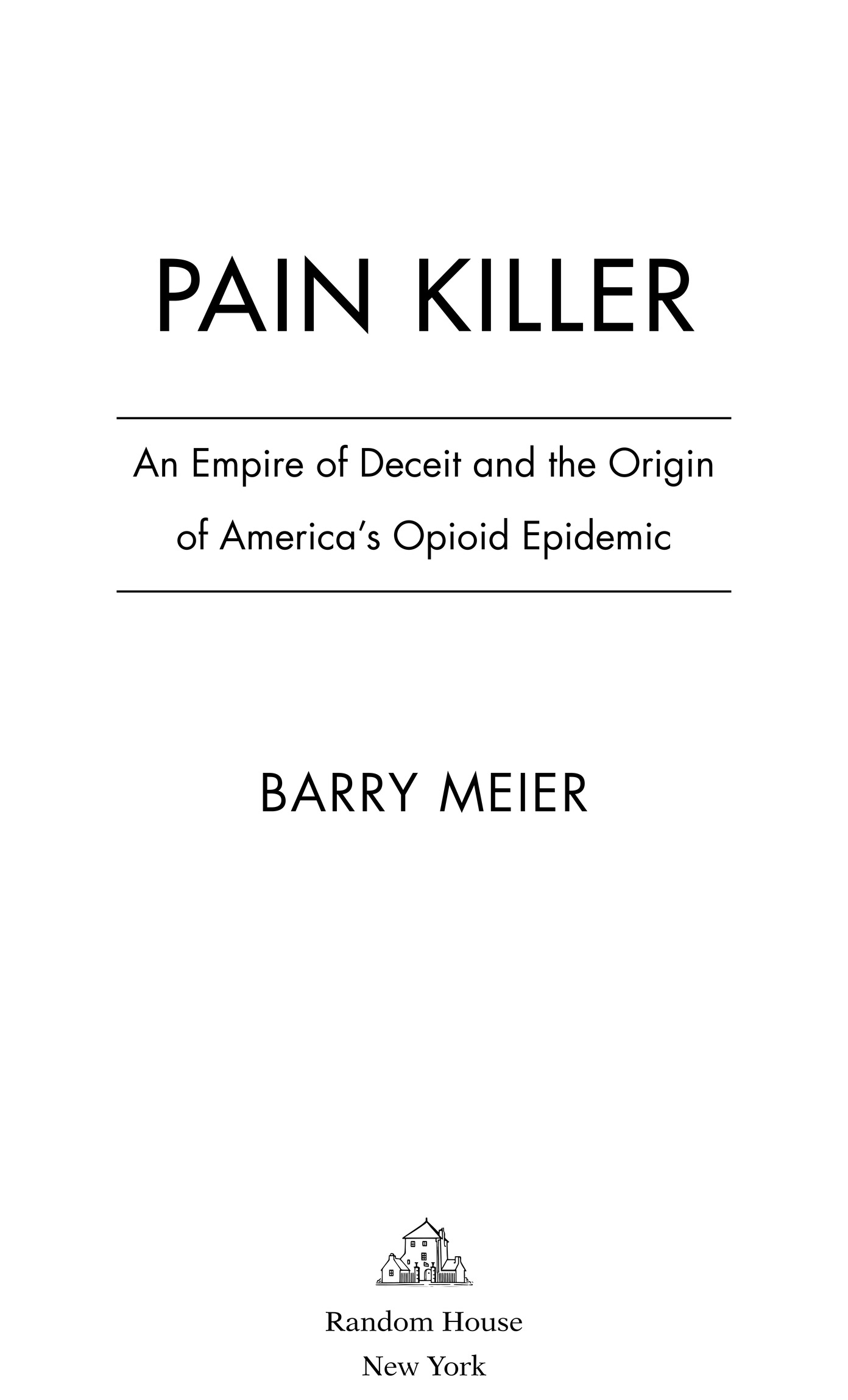All rights reserved.
Published in the United States by Random House, an imprint and division of Penguin Random House LLC, New York.
R ANDOM H OUSE and the H OUSE colophon are registered trademarks of Penguin Random House LLC.
Originally published in the United States in hardcover and in significantly different form by Rodale, an imprint of the Crown Publishing Group, a division of Penguin Random House LLC, in 2003.
Names: Meier, Barry, author.
Title: Pain killer : an empire of deceit and the origin of Americas opioid epidemic / Barry Meier.
Description: 2nd edition. | New York : Random House, 2018. | Includes bibliographical references and index.
Identifiers: LCCN 2018010496 | ISBN 9780525511106 (hardback : alk. paper) | ISBN 9780525511090 (ebook)
Subjects: | MESH: Opioid-Related Disordersepidemiology | Socioeconomic Factors | Oxycodonehistory | Opioid-Related Disordershistory | Drug Overdoseepidemiology | History, 20th Century | History, 21st Century | United States
Cover images: Tim Hawley/Photographers Choice/Getty Images (pill), Imagospot/iStock (powder)
PROLOGUE
Book of the Dead
Within a span of thirty-six hours in Philadelphia, nine bodies had been found just blocks away from one another. Five were inside homes. Two were in cars. Two were on the street. The oldest of them was forty-two. The youngest was twenty-four.
They had names but they would soon become statistics, data points consumed by a tidal wave of fatal drug overdoses sweeping across the United States. In 2016, 64,000 Americans died from drug overdoses. That number equals the population of cities such as Portland, Maine; Lynchburg, Virginia; and Santa Fe, New Mexico. It was as if, in one year, a plague had entered one of these towns and killed every single inhabitant. On an average day in 2016, 175 people died of an overdose, a rate of seven fatalities an hour. Nine deaths in thirty-six hours wasnt unusual.
Bodies were piling up too fast in some places for medical examiners and coroners to keep up. Morgues were filled to capacity, and corpses had to be stored for days in rented refrigerated tractor-trailers until space became available. Many of the dead were not autopsied. It is standard procedure in a drug-overdose case to conduct an autopsy. But even if medical examiners had had time to autopsy every victim, some stopped themselves from doing so. Professional groups that accredit medical examiners set a limit on the number of autopsies that a doctor can competently perform in a year, and examiners in areas with large numbers of overdose deaths would have exceeded that number and risked losing their accreditation. As a result, when overdose victims were discovered near hypodermic needles or pill bottles, they went straight to their graves, unexamined. The vast majority of these deaths42,000 of them in 2016involved opioids, prescription painkillers or illegal drugs derived from compounds either found in the opium poppy or synthesized in a lab.
The opioid crisis has become woven into the fabric of everyday American life. In hospitals, newborns, separated from the narcotics coursing through the bloodstream of their addicted mothers, enter the world writhing in the pain of opioid withdrawal. On the streets, police officers carry a new piece of standard equipment, a nasal spray containing medicine that could save the life of a person in the midst of an overdose. The epidemics impact has been so pervasive that life expectancy among white men in the United States has started falling for the first time in more than twenty years.
Public officials have called for a dramatic response. President Donald J. Trump appointed a White House panel to propose solutions. Lawmakers urged that tens of billions of dollars be spent to treat the addicted. Newspapers, magazines, and television programs are filled with reports about the havoc caused in communities large and small.
All this attention makes it seem as if something new is happening. Thats not the case. The recent appearance of counterfeit versions of a particularly potent synthetic opioid, fentanyl, has driven up the body count. But by 2017, over 200,000 Americans had died during the two preceding decades from overdoses involving legal drugs that were produced by pharmaceutical companies and prescribed by doctors.
People have long been sounding alarms about the mounting death toll linked to prescription painkillers. Still, year after year, politicians, lawmakers, public regulators, professional medical organizations, and insurers have neglected the growing carnage while the pharmaceutical industry has downplayed it. The result is tragic and predictable. By 2016, the number of overdose deaths involving prescription opioids had quadrupled since 1999. A disaster that might have been contained with an early response had morphed into a hydra.
Every catastrophe, natural or man-made, has a beginning. For the opioid crisis, the seed was a drug called OxyContin. When OxyContin first appeared in the mid-1990s, it was heralded as a wonder drug that would change how pain, mankinds oldest and most persistent medical enemy, was treated. A determined band of activists laid the groundwork for its arrival by arguing that millions of people were suffering unnecessarily because doctors had exaggerated fears about the addictive potential of prescription painkillers. Doctors had used the term narcotic to describe the active ingredients in such medications. But advocates of more-aggressive pain treatment were so eager to distance drugs like OxyContin from the back-alley connotations of narcotic that they coined the word opioid to rebrand them.
OxyContin became the centerpiece of the most aggressive marketing campaign for a powerful and potentially addicting narcotic ever undertaken by the pharmaceutical industry. Its producer, Purdue Pharma, showered millions of dollars on doctors to convince them to prescribe OxyContin and claimed that it offered not only a better way to treat pain but a safer one as well. Purdue, which was owned by one of Americas wealthiest and most secretive families, the Sacklers, would make billions from the drugs sales.
When this book was first published, in 2003, many of the critical events chronicled in this new and expanded edition had yet to take place. For instance, in 2007, Purdue and three of its top executives pled guilty to criminal charges in connection with the companys marketing of OxyContin.
With the cases end, I thought my involvement in the story was over. I also labored under the misconception, as journalists often do, that when one stops reporting on a story the story stops. Unfortunately, that has not proven to be the case. If anything, the OxyContin episode spawned an era of chaos, corporate profiteering, political entropy, and misery, some of which might have been prevented by federal officials. Following the plea agreements with Purdue and its officials, the Justice Department consigned to secrecy evidence its own investigators had uncovered about when Purdue first learned about OxyContins abuse and what the company did with this crucial information. After a decade in obscurity, scores of internal Purdue emails and other records unearthed by investigators are finally available to shed new light on the origin story of the opioid crisis. OxyContin was not a wonder drug. It was the gateway drug to the most devastating public-health disaster of the twenty-first century.





